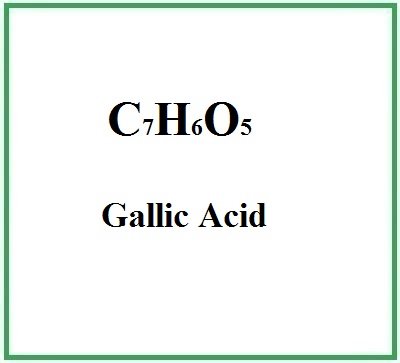The indiscriminate use of antimicrobial drugs has increased the spectrum of exposure of these organisms. In our studies, these phenolic compounds were evaluated: gallic acid, caffeic acid and pyrogallol. The antibacterial, antifungal and modulatory of antibiotic activities of these compounds were assayed using microdilution method of Minimum Inhibitory Concentration (MIC) to bacteria and Minimum Fungicide Concentration (MFC) to fungi. The modulation was made by comparisons of the MIC and MFC of the compounds alone and combined with drugs against bacteria and fungi respectively, using a sub-inhibitory concentration of 128 μg/mL of substances (MIC/8). All substances not demonstrated clinically relevant antibacterial activity with a MIC above ≥1024 μg/mL. As a result, we observed that the caffeic acid presented a potentiating antibacterial effect over the 3 groups of bacteria studied. Pyrogallol showed a synergistic effect with two of the antibiotics tested, but only against Staphylococcus aureus. In general, caffeic acid was the substance that presented with the greatest number of antibiotics and with the greatest number of bacteria. In relation to the antifungal activity of all the compounds, the verified results were ≥1024 μg/mL, not demonstrating significant activity. Regarding potentiation of the effect of fluconazole, was observed synergistic effect only when assayed against Candida tropicalis, with all substances. Therefore, as can be seen, the compounds presented as substances that can be promising potentiating agents of antimicrobial drugs, even though they do not have direct antibacterial and antifungal action (1).
Skin is the outermost layer of the human body that is constantly exposed to environmental stressors, such as UV radiation and toxic chemicals, and is susceptible to mechanical wounding and injury. The ability of the skin to repair injuries is paramount for survival and it is disrupted in a spectrum of disorders leading to skin pathologies. Diabetic patients often suffer from chronic, impaired wound healing, which facilitate bacterial infections and necessitate amputation. Here, we studied the effects of gallic acid ( GA, 3,4,5-trihydroxybenzoic acid ; a plant-derived polyphenolic compound ) on would healing in normal and hyperglucidic conditions, to mimic diabetes, in human keratinocytes and fibroblasts. Our study reveals that GA is a potential antioxidant that directly upregulates the expression of antioxidant genes. In addition, GA accelerated cell migration of keratinocytes and fibroblasts in both normal and hyperglucidic conditions. Further, GA treatment activated factors known to be hallmarks of wound healing, such as focal adhesion kinases (FAK), c-Jun N-terminal kinases (JNK), and extracellular signal-regulated kinases (Erk), underpinning the beneficial role of GA in wound repair. Therefore, our results demonstrate that GA might be a viable wound healing agent and a potential intervention to treat wounds resulting from metabolic complications (2).
Other studies have proposed the hypothesis that gallic acid may reduce neuronal brain damage in Alzheimer's disease (3).
References____________________________________
(1) Antimicrobial and enhancement of the antibiotic activity by phenolic compounds: Gallic acid, caffeic acid and pyrogallol.
Lima VN, Oliveira-Tintino CD, Santos ES, Morais LP, Tintino SR, Freitas TS, Geraldo YS, Pereira RL, Cruz RP, Menezes IR, Coutinho HD.
(2) Gallic Acid Promotes Wound Healing in Normal and Hyperglucidic Conditions.
Yang DJ, Moh SH, Son DH, You S, Kinyua AW, Ko CM, Song M, Yeo J, Choi YH, Kim KW.
Molecules. 2016 Jul 8;21(7). pii: E899. doi: 10.3390/molecules21070899.
PMID: 27399667
(3) Effect of Gallic Acid on Dementia Type of Alzheimer Disease in Rats: Electrophysiological and Histological Studies.
Hajipour S, Sarkaki A, Farbood Y, Eidi A, Mortazavi P, Valizadeh Z.
![]() Gallic acid
Gallic acid 


